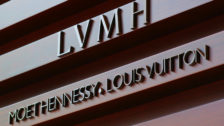Why this fundie thinks Transurban is attractive
Transurban announced higher earnings and distributions for its interim results to December 31, with the toll road operator primed to benefit from rebounding traffic volumes and inflation-linked price increases, according to global asset manager ClearBridge Investments.
Across Transurban’s portfolio, average daily traffic increased 34.8 per cent for the half. Traffic levels normalised compared with the previous year’s half, which was affected by state-based COVID-19 restrictions.
Proportional toll revenue increased 42.6 per cent to $1.65 billion. Free cash, excluding capital releases, a measure of profits after interest costs, jumped 84 per cent to $845 million.
ClearBridge portfolio manager Shane Hurst (pictured) said increased traffic volumes and higher earnings have provided valuation support for Transurban.
“The beauty of Transurban’s existing assets has been their ability to deliver traffic and revenue growth, thereby providing valuation support,” he said. Additionally, Transurban has strong linkages to the consumer price index (CPI) in tolls, offsetting rising interest rates as well as a hedged debt with an average duration of 7.3 years.
Transurban’s share price increased 9.63 per cent over the past year compared with the benchmark S&P/ASX 200 gain of 1.36 per cent.
It announced an interim distribution of 26.5 cents per stapled security. Management expects a full-year distribution to June 30 to be 57 cents. At $14.09 per share, Transurban is yielding 4.05 per cent.
“The business is in a solid position, with the dividend guidance upgrade reflecting confidence in the ongoing traffic recovery post-Covid,” Hurst said.
Compared with pre-COVID 2019 levels, total group traffic volumes were 5.6 per cent higher.
Sydney and Brisbane, representing 66 per cent of Transurban’s toll network, posted record traffic volumes in the first half. However, Melbourne, with 27 per cent of the network, is still 7 per cent below pre-pandemic volumes.
Chief executive officer and executive director Scott Charlton, who will step down at the end of this calendar year after 11 years at the helm, said cities with longer lockdown periods were taking longer to recover.
Inflation beneficiary
In addition to the recovery in traffic, Hurst said Transurban is an attractive investment due to its embedded price increases and defensive earnings profile. This is despite central banks uniformly increasing interest rates and thereby the discount rate used to value risk assets such as Transurban.
The Reserve Bank of Australia increased the cash rate a further 25 basis points in February to 3.35 per cent, the ninth consecutive increase. RBA Governor Philip Lowe has indicated further increases are in the pipeline.
Most of Transurban’s tolls contain inflation-linked escalators, with the rest largely on a fixed annual increase of 4.25 per cent. At the cost line, the $23.4 billion in debt is almost entirely hedged this year, meaning interest repayments have held steady despite higher rates.
Multiple growth levers
Since his appointment in mid-2012, Charlton has overseen significant growth, with the number of toll concessions increasing from six to 22. On the investor call, he said he wanted to make a play for Melbourne-based toll road Eastlink before departing.
“We know more about this market (Melbourne) than almost any place else in the world,” Charlton said. “So we think we’re set up and will provide significant cash and, again, create more longer-term opportunities.”
Although Transurban is in the market for toll road concessions, Hurst said that after years of significant development, including completing NorthConnex and M8/M5 East, network enhancements would represent a greater share of investment going forward.
Transurban is held in the ClearBridge RARE Infrastructure Value Fund and the ClearBridge RARE Infrastructure Income Fund.











